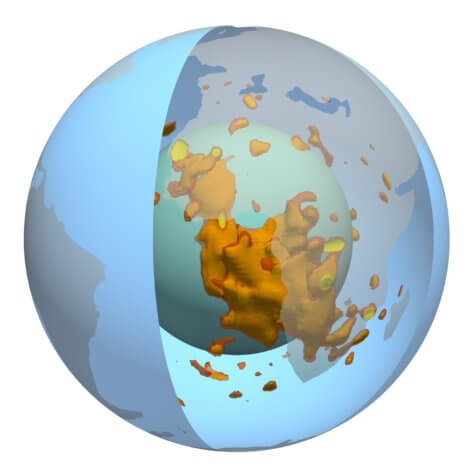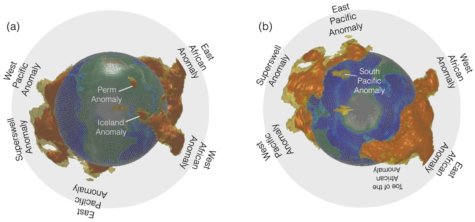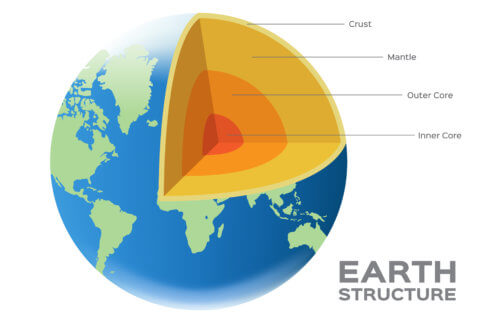
TEMPE, Ariz. — It may sound like the plot of a science-fiction movie, but scientists say there are two massive “blobs” sitting inside the Earth’s surface. Now, a new study is revealing some new secrets about these structures, which are each the size of a continent and 100 times taller than Mt. Everest!
Geologists have actually known about these blobs for years, but it’s still unclear why they exist or what their function may be. As many children learn in school, our planet is like a giant onion, containing many layers under the surface. Earth has a thin outer crust, with a thick semi-liquid mantle underneath. Beneath that is the planet’s fluid outer core and its solid inner core.
What teachers don’t usually talk about are these two enormous structures sitting underneath the African continent and the Pacific Ocean. Officially, scientists call them Large Low-Shear-Velocity Provinces (LLSVPs) and, until now, they’ve suspected that both blobs are generally the same. However, the new study by Arizona State University scientists found some surprising differences between these two mysterious structures.

One blob is much bigger than the other
Using geodynamic modeling and reviewing previous seismic studies, scientists Qian Yuan and Mingming Li were able to figure out the exact height these masses reach as well as the density of each blob. Results show the blob under Africa is about 621 miles taller than the one on the opposite side of the planet under the Pacific. The best explanation for this is that the blob under Africa is less dense — meaning it’s also less stable than the Pacific blob.
“Our calculations found that the initial volume of the blobs does not affect their height,” Yuan says in a university release. “The height of the blobs is mostly controlled by how dense they are and the viscosity of the surrounding mantle.”
“The Africa LLVP may have been rising in recent geological time,” Li adds. “This may explain the elevating surface topography and intense volcanism in eastern Africa.”

The ASU team says their findings may change the way scientists think about what’s going on deep inside the planet’s mantle and how those processes may impact the Earth’s surface. Researchers add that the unstable nature of the African blob may have a connection to continental changes in gravity, volcanic activity, and the motion of the tectonic plates.
“Our combination of the analysis of seismic results and the geodynamic modeling provides new insights on the nature of the Earth’s largest structures in the deep interior and their interaction with the surrounding mantle,” Yuan concludes. “This work has far-reaching implications for scientists trying to understand the present-day status and the evolution of the deep mantle structure, and the nature of mantle convection.”
The study is published in the journal Nature Geoscience.
